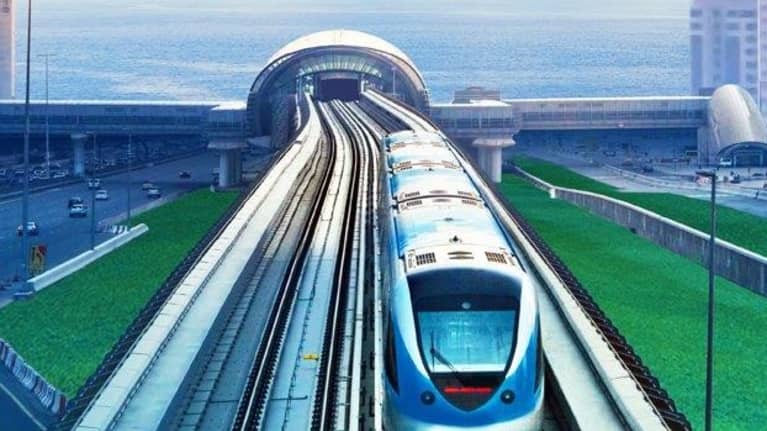A cooperation agreement was signed on Tuesday to develop traffic alternatives between Helsinki, Finland and Tallinn, Estonia. At present, a wide selection of boats runs the route between the two cities across the Gulf of Finland. The trip normally takes two hours, from April to November just one hour and forty minutes. If a tunnel was built under the gulf, a rail connection would connect the cities in just a half hour.
City planners have dreamt of an undersea tunnel between Helsinki and Tallinn for years. Now, a preliminary feasibility study has established that the tunnel’s construction is an option that should be explored thoroughly.
The estimated cost of the tunnel, along with all of its train and traffic equipment, would be between 9 and 13 billion euros in all. According to the feasibility study commissioned by Helsinki, Tallinn and the northern county of Harju in Estonia, the expenses could be covered if the project were to secure at least 40 percent of its funding from the European Union.
Tiina Haapasalo, chief policy adviser on transport and infrastructure at the Confederation of Finnish Industries, EK, says 40 percent EU funding is a pretty meagre amount, especially if the Rail Baltica project intended to link Finland, the Baltic States and Poland has received up to 85 percent of its funding from the EU.
“Although there is still too little information about the project to calculate the risk, I think it would be tough if we still had to come up with over five billion euros ourselves. It would feel a lot safer if the EU’s share would account for well over half the cost,” she says.
Minister of Transport and Communications Anne Berner and Helsinki’s deputy mayor Pekka Sauri represented Finland at Tuesday’s signing of the cooperative agreement.
Unanticipated costs already accounted for
The preliminary feasibility report says that the 80-kilometre train track connecting the Pasila station in Helsinki with the Ülemiste station in Tallinn would entail three main expense categories.
“The tunnel excavation would require about 3 billion euros, and the technical and safety systems would swallow another 2-3 billion. The trains and other equipment would cost just over one billion euros, and another 1-3 billion has been reserved for anything unexpected that comes along,” says Ulla Tapaninen, a logistics and supply chain expert for the City of Helsinki.
Tapaninen says the next logical step is to conduct a risk analysis of the tunnel project. Helsinki and Tallinn have already applied for EU funding for the analysis, along with the Finnish Transport Agency, the Uusimaa regional council, the Estonian Ministry of Economic Affairs and Communications and Harju County in Estonia.
A gigantic boring machine
If a tunnel was to be built under the Gulf of Finland to connect Helsinki and Tallinn, it would be excavated with a tunnel boring machine (TBM), also known as a “mole”.
Tunnel boring machines are used as an alternative to drilling and blasting methods, excavating rock using disc cutters mounted in the cutter head. The disc cutters create compressive stress fractures in the rock, causing it to chip away from the rock in front of the machine. The excavated rock is transferred through openings in the cutter head to a belt conveyor for removal from the tunnel. This is the method that was used to build the Channel Tunnel connecting England and France, and to build railway tunnels in the Alps.
The train track connecting Helsinki and Tallinn would be 1,435 millimetres wide, the European standard, instead of the 1,524 millimetres in use in Finland. This is because the rail would eventually link with the Rail Baltica track, which would continue on to Poland and Central Europe.
It is important that the track is congruent with the system in use in Europe if the project is to receive EU money.
Home every night
Over 8 million passengers travel between Helsinki and Tallinn each year. It is estimated that some 60,000 Estonians work in Finland, most of whom travel home every weekend.
Much of the tunnel’s economic success will be founded on this work-based travel.
“We worked from the premise that weekly traffic would turn into daily traffic if the trip was shortened to only a half hour. This would mean that 11 million workers would be travelling back and forth between Helsinki and Tallinn each year, or about 25,000 people a day,” says Helsinki’s logistics consultant Tapaninen.
The preliminary feasibility study placed the price of a one-way ticket at 36 euros.
In addition to workers, the trains would naturally also transport cargo, even if most of the freight would continue to be carried by ships. Similarly, the majority of tourists are expected to continue travelling across the gulf via ship.
If the tunnel is unveiled for use sometime in the 2030s, existing shipping companies could even take over the railway operations.
“Danish, Dutch, German and Swedish shipping companies already work alongside the Finnish companies in Finland, and some of them are quite big. It is entirely possible that they could expand their operations into the railway tunnel’s logistics or maintenance,” says EK’s Haapasalo.
